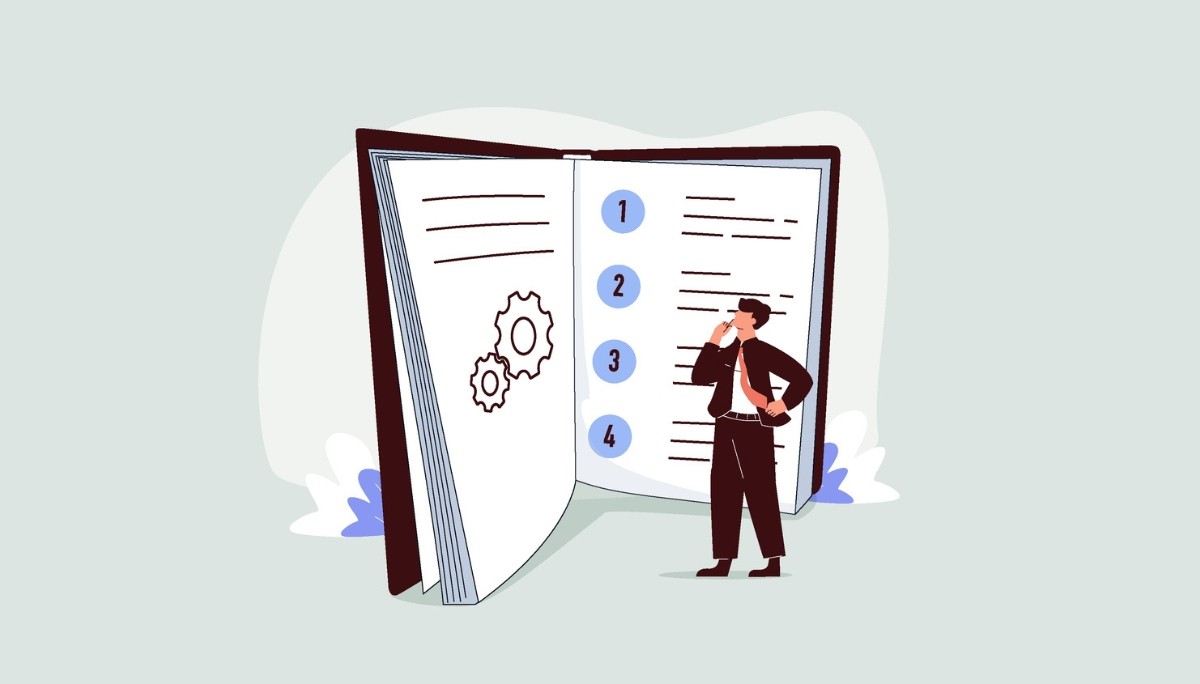What Is a PIP? How to Use Performance Improvement Plans in Tech Teams
By
Liz Fujiwara
•
Aug 6, 2025
A Performance Improvement Plan (PIP) is a structured and strategic tool designed to support employees in meeting performance expectations and enhancing their overall effectiveness at work. Rather than serving as a punitive measure, a well-crafted PIP provides employees with a clear roadmap for success by outlining specific areas that require improvement, setting measurable goals, and establishing realistic timelines for progress. By fostering open communication and collaboration between managers and employees, a PIP creates an opportunity for professional growth and reinforces organizational standards. In this article, we will walk through the essential steps for developing and implementing an effective PIP, offering practical tips to ensure alignment between employees and management, promote accountability, and ultimately drive long-term performance improvement.
Key Takeaways
A Performance Improvement Plan (PIP) is a formal tool designed to address performance deficiencies through structured support and open communication between employees and management.
Implementing a PIP is most effective when employees demonstrate potential for improvement, requiring a clear identification of specific performance issues and the establishment of measurable goals.
Successful PIPs incorporate regular check-ins, progress tracking, and the provision of necessary resources and managerial support to foster accountability and maintain employee motivation.
Understanding the Performance Improvement Plan (PIP)

A PIP is a structured approach designed to address performance issues head-on. At its core, a PIP is a formal document that facilitates discussions between an employee and their supervisor to tackle specific performance deficiencies. Its primary objective is to identify areas where the employee is falling short and provide a clear path for improvement.
The strength of a PIP lies in its positive framing. Rather than being punitive, it serves as a tool for personal growth and professional development. By fostering alignment between management and employees, PIPs help improve overall job performance and satisfaction. They focus on long-term solutions, providing employees with the guidance and resources they need.
When to Implement a PIP Plan
Timing is everything when it comes to implementing a PIP. A PIP is most effective when an employee shows potential for improvement but is currently underperforming. It’s beneficial when employees struggle with measurable objectives such as sales targets or quality standards. If an employee is committed to change and needs support to improve, a PIP can be a game-changer.
Before initiating the PIP process, it’s crucial to analyze the underlying factors contributing to poor performance. If an employee consistently struggles despite receiving feedback, it may be time to consider a PIP. This approach not only identifies specific areas for improvement but also acknowledges existing strengths, setting the stage for a well-rounded improvement plan.
Key Components of an Effective PIP Plan

Creating a PIP meticulously ensures clarity and focus. The first step is to clearly outline the specific performance metrics that need improvement. These metrics should be fact-based, highlighting deficiencies and setting the stage for measurable goals. The action plan must detail specific objectives, progress milestones, and any necessary training to guide the employee effectively.
Accountability and motivation are enhanced when employee goals align with organizational objectives. Setting realistic timeframes empowers employees to improve, enhances engagement, and ensures the goals are attainable, contributing to the employee’s success and better outcomes.
Resources such as additional training, professional development, and mentorship play a significant role in helping employees meet their PIP objectives. Scheduled follow-ups are essential for assessing progress and clarifying the consequences of unmet goals, ensuring the PIP remains a dynamic and responsive document.
Steps to Create a Successful PIP Plan

Creating a successful PIP involves several key steps to ensure the plan is both fair and effective. These steps include conducting an initial assessment and discussion, setting achievable goals, and providing the necessary resources and support.
Each of these steps plays a crucial role in the overall success of the PIP, and understanding their details can make all the difference.
Initial Assessment and Discussion
The initial assessment and discussion form the foundation of a successful PIP. This stage involves having a candid conversation with the employee to address the reasons behind performance issues. Assessing the employee’s current performance is essential, as it provides a clear picture of areas that need improvement. Key aspects to consider during this assessment include attendance, quality of work, and communication skills.
Engaging in open discussions fosters transparency and helps tailor the PIP to address specific needs. By involving the employee in this process, you create a sense of ownership and commitment to the improvement plan.
Setting Achievable Goals
Setting achievable goals is a critical component of any PIP. The purpose is to outline realistic objectives that the employee can meet step by step. Goals should follow the SMART framework:
Specific
Measurable
Attainable
Relevant
Time-bound
Each goal needs a clear start and end date to provide structure and urgency. Avoiding vague or unattainable goals is essential to prevent frustration and ensure the employee’s success.
When goals are clear and measurable, it becomes easier to track progress and make adjustments as needed.
Providing Necessary Resources and Support
Providing the necessary resources and support during a PIP can significantly enhance the likelihood of an employee’s improvement. Effective support from management fosters an environment where employees feel empowered to improve their performance. Offering mentorship and training tailored to the individual employee’s needs is essential for their success in meeting PIP objectives.
Managers should review factors such as training requirements, onboarding processes, and available resources related to employee performance. By ensuring the employee has access to the proper tools and support, you create a fair process that boosts the chances of successful outcomes.
Tracking Progress and Regular Check-ins
Tracking progress and conducting regular check-ins are vital components of the PIP process. These check-ins involve:
Regular bi-weekly or weekly meetings to review the employee’s progress against the benchmarks set in the PIP
Closely monitoring the employee’s progress
Providing necessary adjustments to keep the improvement plan on track, including progress reviews
Documenting meeting schedules and progress ensures an organized approach. Regular feedback during the PIP fosters ongoing communication and objective tracking, creating a workflow that supports continuous learning through formal documentation.
Involving employees in updating the PIP document during check-ins can transform the process from a punitive experience into a collaborative effort, fostering a sense of ownership and accountability. Utilizing both qualitative and quantitative data helps track progress effectively, including:
Deliverables
Reports
Self-surveys
Feedback
Addressing Common Challenges in PIP Plans

Addressing common challenges in PIP plans is essential for ensuring their effectiveness. Employees who are struggling often view PIPs with skepticism, associating them with potential job loss or disciplinary action. This perception can lead to negative outcomes, impacting morale and engagement.
The following subsections will explore how to overcome employee resistance and ensure strong managerial support, which are two critical factors for a successful PIP.
Overcoming Employee Resistance
Overcoming employee resistance is crucial for the success of a PIP. Employees may become hostile or withdraw if they interpret feedback negatively. When PIPs are perceived as punitive, motivation and engagement can decline significantly. Feelings of insecurity and fear may arise, leading to disengagement and resistance to the process.
To combat this, it is essential to frame the PIP as a positive tool for growth and improvement. Using positive reinforcement and encouraging employee input can help shift the perception from punitive to supportive. By involving employees in the process and valuing their feedback, you create a more collaborative and constructive environment that empowers employees to improve and fosters positive change.
Ensuring Managerial Support
Ensuring managerial support is another critical factor in the success of a PIP. Key points include:
The supervisor’s expectations have a significant impact on the success of the performance improvement plan.
Managers play a vital role in facilitating the improvement process by providing necessary guidance and resources.
A positive mindset from the manager can greatly influence the success of the PIP.
HR professionals should provide training and support to managers to help them prioritize and effectively support employee performance. HR can assist managers by:
Reviewing factors such as training history and leadership support
Better understanding of the context of the employee’s performance
Providing targeted support based on this understanding
This collaborative team effort ensures that employees feel supported and motivated to achieve their PIP goals as valued members of the work environment.
Examples of PIP Plans for Different Performance Issues

Providing specific examples of PIP plans for different performance issues can offer valuable insights. For instance, a PIP addressing poor attendance may include:
Aiming to reduce absenteeism to below 5% of scheduled workdays
Providing clear expectations to ensure employees understand attendance requirements
Outlining consequences to reinforce the importance of meeting attendance standards
Similarly, a PIP for not meeting deadlines would focus on consistently meeting deadlines for assigned tasks and projects. The goal for poor customer service performance should be to provide exceptional customer service consistently, meeting or even exceeding customer expectations.
These performance improvement plan examples highlight the importance of setting clear, specific performance goals and providing a structured approach to achieving improvement, while addressing skill gaps through performance reviews.
Delivering the PIP Plan Effectively
Delivering the PIP plan effectively is crucial for its success. During the PIP meeting, it’s essential to:
Create a positive tone, emphasizing that the plan is intended to support the employee’s growth
Foster a positive environment to encourage a sense of ownership
Ensure the employee understands the goals and their responsibilities
Incorporating employee feedback during the PIP process offers several benefits:
Increases engagement
Provides insight into the employee’s experience and goals
Enhances the plan’s effectiveness by allowing modifications based on employee input
Facilitates regular communication to address challenges and keep the employee focused on their goals
For accountability, both managers and employees must sign the completed PIP plan, which should be approved by HR.
Closing the PIP Plan
Closing a PIP plan involves:
Reviewing the employee’s performance to determine the level of improvement achieved
Formally closing the plan upon successful completion
Acknowledging the employee’s success
Continuing the employee’s employment
Evaluating the outcomes by recognizing improvements and discussing future steps
If the employee meets their goals before the PIP ends, the closing meeting may be moved up. If the employee’s performance does not improve by the end of the PIP, the plan will be closed, leading to decisions on next steps, which might include reassignment, demotion, or termination.
Summary
PIPs are powerful tools for addressing performance issues, fostering growth, and ensuring alignment with organizational goals. By understanding the components and steps involved in creating an effective PIP, managers can transform performance challenges into opportunities for improvement.
PIPs not only help employees improve but also increase overall job satisfaction and performance. Remember that the success of a PIP relies on a collaborative effort, clear communication, and unwavering support from both management and employees. Utilize PIPs to encourage a workplace culture centered on consistent improvement and positive results.




